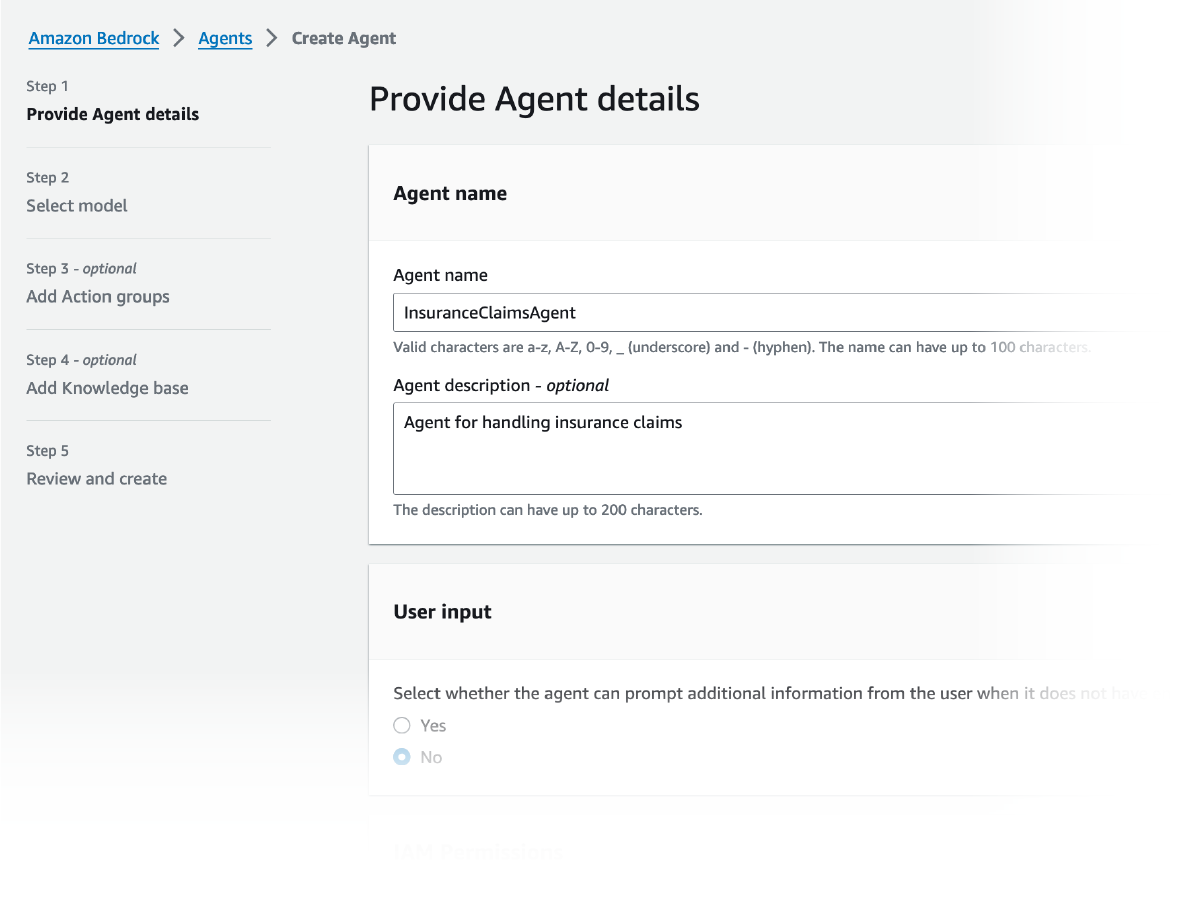- Generative AI›
- Amazon Bedrock›
- Agents
Amazon Bedrock Agents
Enable generative AI applications to automate multistep tasks by seamlessly connecting with company systems, APIs, and data sources
What is Amazon Bedrock Agents?
Amazon Bedrock Agents uses the reasoning of foundation models (FMs), APIs, and data to break down user requests, gathers relevant information, and efficiently completes tasks—freeing teams to focus on high-value work. Building an agent is straightforward and fast, with setup in just a few steps. Agents now includes memory retention for seamless task continuity and Amazon Bedrock Guardrails for built-in security and reliability. For more advanced needs, Amazon Bedrock supports multi-agent collaboration, allowing multiple specialized agents to work together on complex business challenges.
Features
Multi-agent collaboration
Amazon Bedrock multi-agent collaboration allows developers to build, deploy, and manage multiple specialized agents seamlessly working together to address increasingly complex business workflows. Each agent focuses on specific tasks under the coordination of a supervisor agent, which breaks down intricate processes into manageable steps to ensure precision and reliability. By automating these complex operational processes, businesses can free their teams from operational burdens, allowing them to focus on innovation and deliver real business value.

Retrieval augmented generation
Agents securely connects to your company’s data sources and augments the user requests with the right information to generate an accurate response. For example, if the user asks about claims eligibility, the RAG agent will look up information from the knowledge base and reconcile between the submitted claims and the eligibility policy response: “You need to turn in your driver’s license, pictures of the damaged car, and an accident report.”

Orchestrate and execute
Customers can create an agent in Amazon Bedrock in just a few quick steps, accelerating the time it takes to build generative AI applications. Customers first select a model and write a few instructions in natural language. For example, “you are an inventory management agent that determines product availability in the inventory system.” Agents orchestrates and analyzes the task and breaks it down into the correct logical sequence using the FM’s reasoning abilities. Agents automatically calls the necessary APIs to transact with the company systems and processes to fulfill the request, determining along the way if they can proceed or if they need to gather more information.

Memory retention
Agents has the ability to retain memory across interactions, offering more personalized and seamless user experiences. This feature allows an agent to remember historical interactions and improves the accuracy of multistep tasks. Users benefit from improved recommendations and recall of prior context when required, ensuring a more cohesive and efficient interaction with the agent.

Code interpretation
Agents supports the ability to dynamically generate and execute code in a secure environment. This feature automates complex analytical queries that were previously hard to answer solely through model reasoning. Use this capability to address a wide range of sophisticated use cases, such as data analysis, data visualization, and mathematical problem solving.

Introducing Amazon Bedrock AgentCore
Using any open-source framework and model, Amazon Bedrock AgentCore helps you deploy and operate AI agents securely and at scale.
How to get started
Did you find what you were looking for today?
Let us know so we can improve the quality of the content on our pages